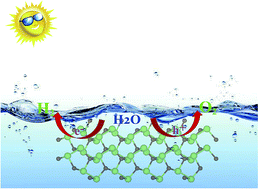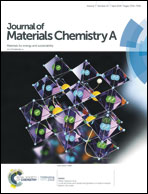Flexible, auxetic and strain-tunable two dimensional penta-X2C family as water splitting photocatalysts with high carrier mobility†
Abstract
Two dimensional materials have been regarded as promising candidates for photocatalytic water splitting. Herein, we systematically investigated the potential of a novel two dimensional penta-X2C (X = P, As, Sb) family for photocatalytic water splitting by means of density functional theory. The penta-X2C family consists of semiconductors with indirect band gaps of 2.64 eV, 2.09 eV and 1.35 eV for X = P, As and Sb, respectively. Notably, the band edge positions of penta-P2C and penta-As2C can perfectly satisfy the redox potentials of photocatalytic water splitting via strain engineering, whereas penta-Sb2C only meets the reduction potential. The ultrahigh (up to 103–105 cm2 V−1 s−1) and anisotropic carrier mobilities are crucial to suppressing the photogenerated electron-hole pair recombination. Meanwhile, the penta-X2C family exhibits excellent light absorption in the visible-ultraviolet region, favorable for the utilization of sunlight. In addition, compared with other common 2D materials such as graphene and h-BN, the penta-X2C family possesses a relatively smaller Young's modulus and larger critical strain, while penta-X2C have large negative Poisson's ratios of −0.103, −0.079 and −0.077, respectively. These results testify that the penta-X2C family has potential applications not only in photocatalytic water splitting but also in designing 2D electromechanical and optoelectronic devices.



 Please wait while we load your content...
Please wait while we load your content...
